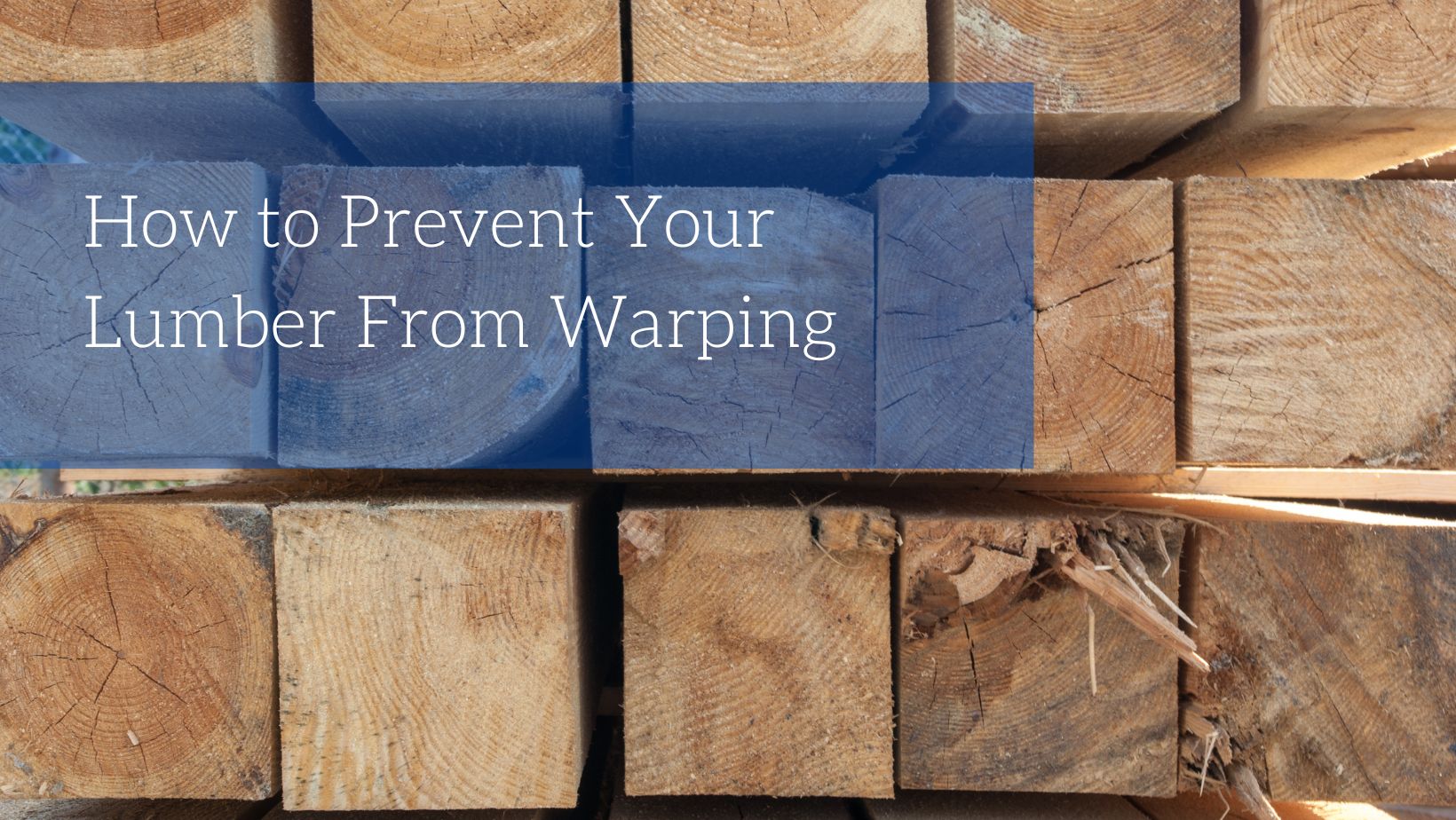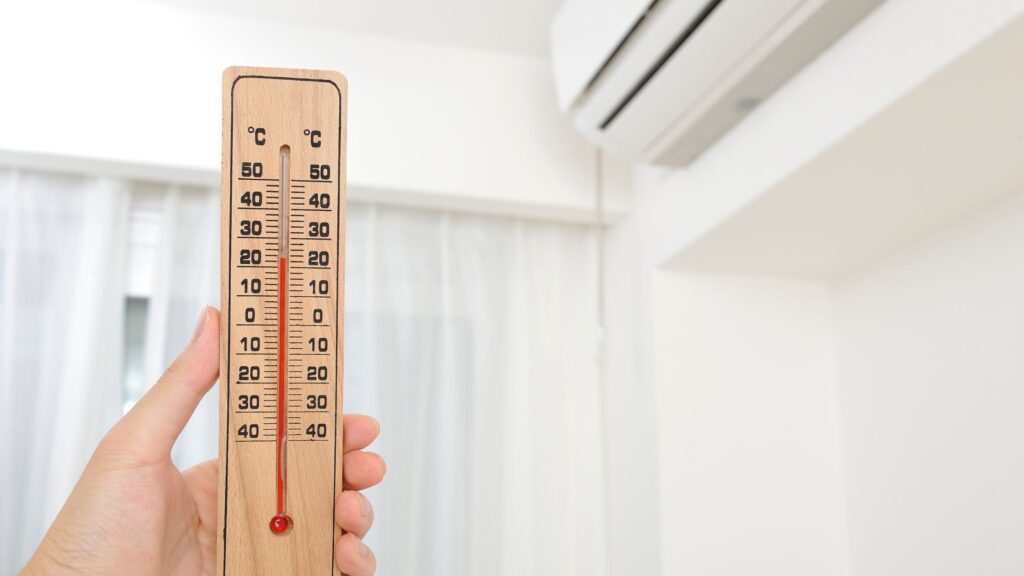Dimensional lumber is one of the most important materials for carpentry, building material and many kinds of accents and designs. It is used to make the frame and foundation of a high percentage of structures built in the US and Canada. Lumber is also used for decorative purposes. As much as we would like, dimensional lumber does not come perfectly from the lumberyard. It often has irregularities in shape and size which need to be fixed before use. In this blog post, we will discuss how to prevent your lumber from warping and some of the factors that can cause it to warp. Stay tuned!
What is Warping in Wood?
Warping is a common problem that woodworkers face when dealing with dimensional lumber. When wood is heated or cooled too quickly, the cells on the surface of the wood expand or contract at a different rate than the cells in the center of the board. This uneven expansion and contraction causes the wood to distort, resulting in warped boards.
What Causes Wood to Bend?
Warped lumber is a common problem that can happen when the wood’s moisture content is out of balance. In order to prevent warped wood, it is important to understand equilibrium moisture content (EMC). EMC is the point at which the amount of moisture in the air is equal to the moisture level in the wood. When the two are out of balance, the planks will absorb or release moisture until it reaches equilibrium. If the air is too dry, the wood will absorb moisture from the air and swell, causing warped boards. Conversely, if the air is too moist, the wood will release moisture into the air and shrink, also causing warped boards.
What Causes Changes in Moisture Content?
The moisture content of wood is constantly changing in response to the surrounding environment. The rate at which changes occur is determined by a number of factors. The size of the piece of wood, whether or not it has a coating, the direction of the wood grain, and the temperature of the air around it are all factors. Ambient air temperature has the most significant impact on the rate of change in moisture content. The warmer the air, the faster wood reaches EMC.
Ultimately, all wood will reach EMC given enough time, but the factors mentioned above can influence how long that process takes.
What Are the Different Types of Wood Warping?
Bow
Bowing occurs when the longitudinal axis of the board bends lengthwise, usually due to End-checking which refers to surface cracks that appear near the ends or edges of lumber as it dries. These cracks are a result of the rapid loss of moisture from the outer surface layers while the inner layers remain relatively moist. End-checking is often seen in wide boards or those with high initial moisture content.
Kinks
Kinks are permanent deformations in wood that occur when longitudinal forces exceed the elastic limit of the wood. While kinks can occur in any type of wood, they are most common in softwoods such as pine and spruce. Kinks can be caused by a variety of factors, including incorrect drying, poor storage conditions, and improper handling. Once a kink has formed, it is very difficult to remove.
Twist/wind
This is a reversible curvature that is caused by unequal drying shrinkage in the radial and tangential directions. The amount of twist that develops depends on the species of wood as well as the environmental conditions during drying. In general, softwoods are more susceptible to twisting than hardwoods.
Twisting can be corrected by applying pressure to the concave face of the deformed piece. Once the pressure is released, the wood should return to its original shape. However, if the stress is not relieved, the wood may eventually fracture.
Cup
Cupping occurs when the lumber is not oriented in a uniform direction across its width. The deviation can be in the form of a curve, or it can be in the form of a series of bends. This wrap type is caused by differing rates of growth in different parts of the tree trunk. When the tree is growing, the outer layers of the bark expand more quickly than the inner layers. This causes the trunk to swell outward, and over time, this can cause the wood to cup. Cupping is most common in heartwood, which is harder to control than sapwood. Cup warp can be prevented by proper felling and sawing techniques. It can also be minimized by using proper kiln drying procedures.
Crook
is another type of reversible warp that occurs when the fibers on one side of the board are shorter than those on the other side. Unlike other types of warping, crook is reversible, meaning that the wood can be straightened out again. It can be corrected by applying pressure to the concave face.
How to Prevent Warping in Lumber
Kiln Drying
Warped wood can be difficult to work with and can affect the strength and stability of structures made from it. Kiln drying is one way to keep wood from warping because it takes the moisture out of the wood while giving you control over how fast and how much it dries. This process helps stabilize the wood and makes it less likely to warp when exposed to changes in temperature and humidity. Kiln-dried wood is better than air-dried wood because it is less likely to be damaged by fungal growth during storage.
Proper Storage
To prevent warped wood, it is important to store lumber in a way that minimizes moisture exposure and increases air circulation. One effective method for avoiding cupping is to store lumber vertically, with the boards placed side by side on top of one another rather than stacked on top of each other. Additionally, lumber piles should be supported on a flat and level foundation, and heavy weights can be placed on top of the pile to help reduce warping. For optimal results, it is also important to provide proper ventilation and airflow within the storage area.
Monitoring Moisture Levels
Monitoring the moisture content of your wood is important to ensure that it stays in good condition. One common way to monitor the moisture content of your wood is by using a hygrometer, which measures relative humidity. This type of device typically has a small dial or screen with a needle that moves as the relative humidity changes. By keeping track of this reading over time, you can get an accurate picture of how much moisture your wood is retaining and adjust your storage practices accordingly.
Another option for monitoring moisture content is to weigh your wood on a regular basis. This method involves carefully weighing each piece of wood as you add it to your storage area and noting its weight. If you notice that it starts gaining weight over time, this indicates that it is retaining more moisture than usual and may be at risk for damage or decay. You can then take steps to address any issues with humidity levels or distribution in order to keep your wood in good condition.
Acclimation
For finished wood products, allowing wood to acclimate to the surrounding environment before installation is crucial for preventing various types of warping. Acclimating refers to the process of wood taking 3–7 days to adjust to its final resting humidity level. There are often times slightly higher or lower moisture levels in the air than in the wood product (particularly hardwood flooring). If wood has been kiln dried to around an 8% humidity level, then allowing it to acclimate to its final environment will help prevent future warping or movement of any kind.
Warping is a common problem that every woodworker will face at some point. By using the right lumber and taking the proper precautions, you can avoid this issue and keep your projects looking great. Do you have any tips for preventing warping? Share them in the comments below.









